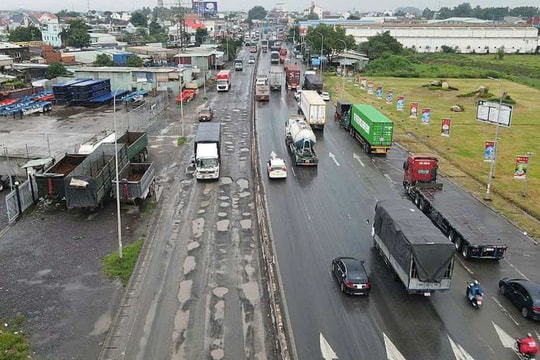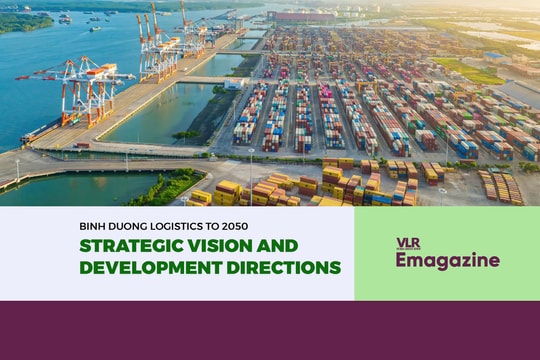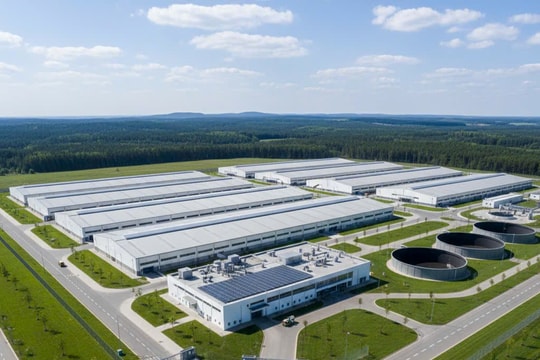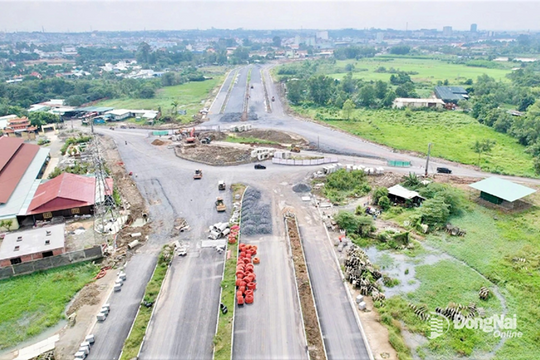Vietnam and Southeast Asia are witnessing rapid e-commerce growth, driving significant changes in logistics. Traditional models are becoming obsolete, requiring businesses to invest in smart warehousing, expand transportation networks, implement automation, and adopt digital solutions to enhance efficiency.
This article analyzes key trends in e-commerce logistics, the challenges the industry faces, and the solutions businesses can implement to adapt and achieve sustainable growth.
The Growth of E-Commerce and the Demand for Logistics
.jpg)
.jpg)
As the market expands, the demand for e-commerce logistics services is also increasing. Businesses not only require faster delivery systems but also need efficient inventory management, accurate order processing, and optimized shipping costs.
Traditional logistics networks, designed to serve conventional retail models, are proving inadequate in handling the high volume of small, diverse orders with fast delivery expectations typical of e-commerce. This has led businesses to seek new solutions to improve efficiency and customer service.
Key Trends in E-Commerce Logistics
Automation and Technology Adoption: Technological advancements are driving significant progress in e-commerce logistics. Major global companies have implemented automated warehouse systems featuring robots for picking, sorting, and packing, reducing order processing time.
In Vietnam, companies such as Viettel Post and Giao Hàng Nhanh are heavily investing in AI, IoT, and transportation management systems (TMS) to enhance operational efficiency. The use of big data analytics also helps businesses forecast demand, optimize delivery routes, and reduce failed deliveries.
Optimizing Logistics Networks: To ensure fast deliveries and lower transportation costs, businesses are establishing multi-hub warehouse networks. Smart distribution centers, strategically located near high-demand areas, help reduce transportation distances and accelerate delivery speeds.
.jpg)
.jpg)
The fulfillment model is also gaining traction, allowing e-commerce businesses to optimize inventory management and leverage third-party logistics networks for faster deliveries.
Social Commerce and Omnichannel Integration: Social commerce is emerging as a new trend, with social media platforms becoming key sales channels. Platforms like Facebook, TikTok, and Shopee Live are enabling businesses to reach customers directly and streamline the purchasing process.
Omnichannel integration is another critical strategy, allowing businesses to optimize customer experience. Consumers can buy online and pick up in-store (click-and-collect) or easily return products through flexible logistics systems.
The Rise of E-Logistics Services: E-logistics is becoming an essential component of e-commerce growth. Logistics providers are not only focused on delivery but also offer inventory management, order fulfillment, and supply chain optimization services for businesses.
In Vietnam, e-logistics contributes approximately 20-25% of GDP and is expected to grow by 12% annually. Solutions such as dropshipping, third-party logistics (3PL), and fulfillment services are helping e-commerce businesses alleviate operational burdens and focus on business expansion.
Challenges and Solutions in E-Commerce Logistics
Infrastructure Limitations: Despite rapid development, Vietnam’s transportation and logistics infrastructure still faces challenges. Roads are not fully integrated, ports and warehouses are insufficient to accommodate the rapid growth of e-commerce.
The solution lies in infrastructure investments, including highway expansion, inland port development, and public-private partnerships to enhance national logistics capacity.
Management and Operations: Service quality in e-commerce logistics remains inconsistent, particularly in order management and returns processing. The adoption of order tracking technologies, AI-driven operational optimization, and standardized return procedures will improve service efficiency.
Last-Mile Delivery: Last-mile delivery plays a crucial role in customer experience. However, in many areas, delivery services remain slow, shipping costs are high, and optimization solutions are lacking.
The adoption of electric vehicles, drones, and partnerships with local logistics providers can enhance last-mile delivery efficiency. Many businesses are also deploying automated pickup stations to improve customer convenience.
.jpg)
.jpg)
The Future of E-Commerce Logistics in Vietnam
With the rapid growth of e-commerce, Vietnam’s logistics sector has a tremendous opportunity for transformation. Investments in technology, infrastructure, and skilled labor will enable the industry to better meet market demands and enhance international competitiveness.
Trends such as same-day delivery, automated warehousing, and AI applications will continue shaping the future of e-commerce logistics. Businesses must quickly adapt, innovate, and leverage technology to maintain their competitive edge in a highly dynamic market.
E-commerce logistics is undergoing a significant transformation, driven by technological advancements and increasing customer expectations. Investing in infrastructure, adopting new technologies, and optimizing logistics networks will be key to business success.
Only by remaining agile and continuously innovating can logistics truly become the driving force behind sustainable e-commerce growth and the digital economy of the future.


.jpg)
.jpg)

.jpg)


.jpg)

.png)
.png)
.png)


.png)
.png)








